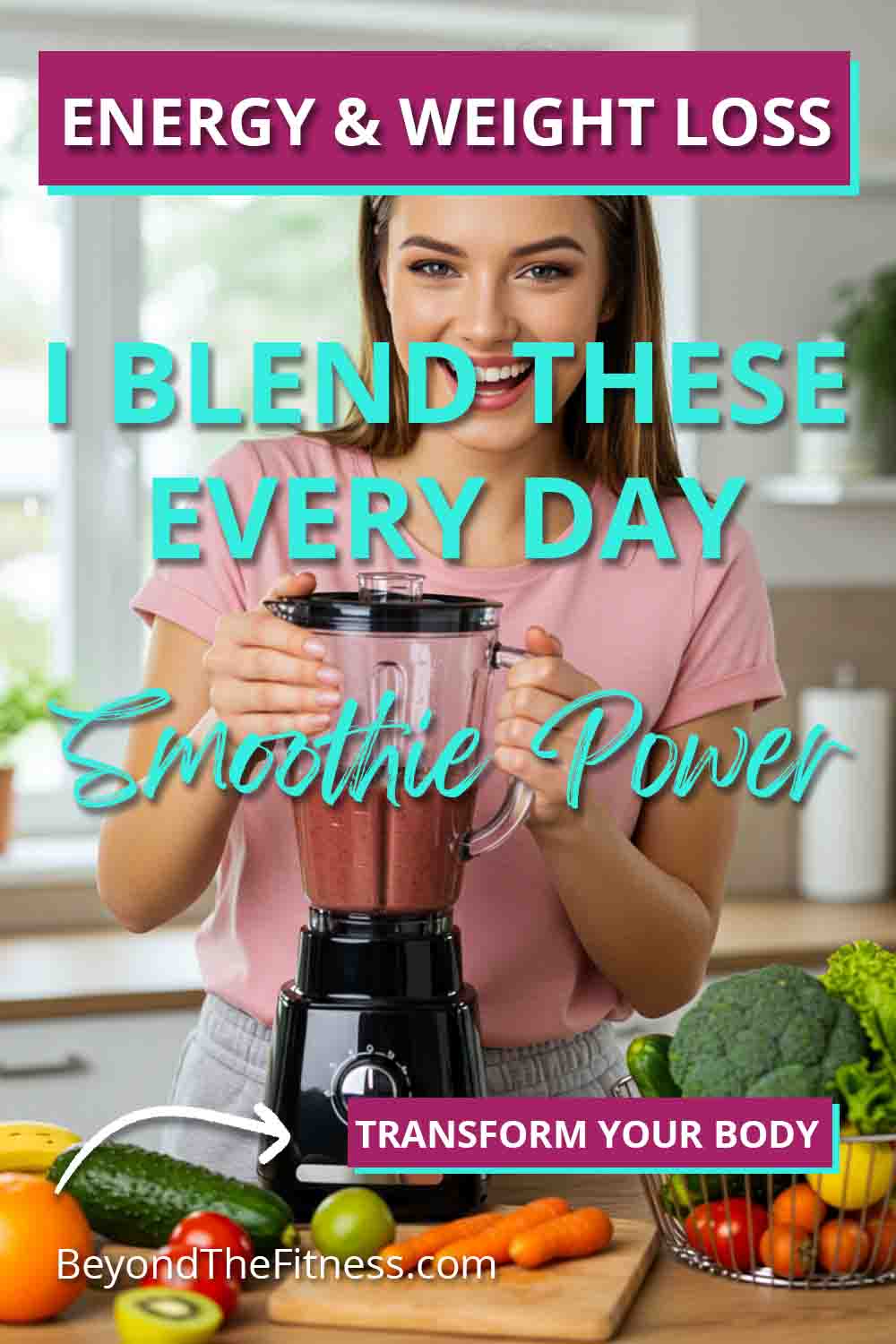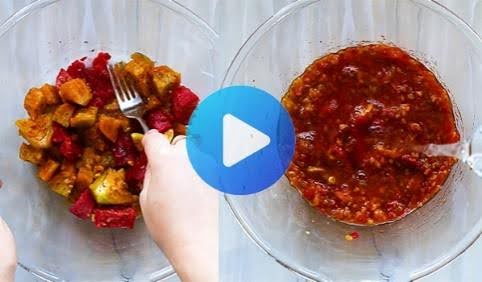Lots of people ask me about smoothies. Are they really good for you? Can they help you lose weight? Can they give you more energy? My answer is usually the same: it depends on what you put in them. Smoothies can be amazing tools for boosting your energy levels and supporting your weight loss journey, but they can also be sneaky sources of sugar and calories if you are not careful. Let’s dive into how you can make smoothies work for you.
Understanding Smoothies: More Than Just Blended Fruit
A smoothie is basically a drink made from blended raw fruit, vegetables, and sometimes other ingredients like yogurt, milk, seeds, or protein powder. The idea is simple: blend everything up into a drinkable consistency. Because they are blended rather than juiced, smoothies keep the fiber from the fruits and vegetables. Fiber is super important for digestion, feeling full, and keeping blood sugar steady.
This is where smoothies have an edge over juices, especially for weight loss and energy. Juice often removes the fiber, leaving you with concentrated sugar that can spike your blood sugar and leave you feeling hungry again soon. Smoothies, with their fiber intact, can help you feel satisfied for longer.
How Smoothies Can Boost Your Energy
Feeling tired often? Your diet plays a huge role in your energy levels. Smoothies can be a fantastic way to pack in energy-boosting nutrients quickly and easily.
Steady Energy Release
The key to sustained energy is balanced blood sugar. When you eat sugary foods with no fiber or protein, your blood sugar shoots up quickly, giving you a temporary rush, followed by a crash that leaves you feeling sluggish. A well-made smoothie avoids this.
- Complex Carbohydrates: Fruits and vegetables provide carbohydrates, your body’s main energy source. Choosing lower-sugar fruits like berries and adding vegetables helps provide carbs along with fiber. Oats are another great addition for complex carbs that release energy slowly.
- Healthy Fats: Ingredients like avocado, chia seeds, flax seeds, and nut butters (in moderation) add healthy fats. Fats are a dense source of energy and also slow down digestion, leading to a more gradual release of energy from the carbohydrates in your smoothie.
- Protein Power: Protein is not just for muscles; it also helps stabilize blood sugar and promotes satiety. Adding protein powder, Greek yogurt, cottage cheese, or even silken tofu makes your smoothie more balanced and helps prevent energy dips.
Nutrient Density
Smoothies allow you to consume a variety of nutrient-dense foods at once. Vitamins and minerals are essential for the processes in your body that create energy. For example, B vitamins play a critical role in converting food into energy. Iron, found in spinach and other leafy greens often added to smoothies, is crucial for carrying oxygen in your blood; low iron can lead to fatigue. By packing your smoothie with fruits, vegetables, and maybe some seeds, you are getting a wide array of these vital micronutrients.
Smoothies and Your Weight Loss Goals
Can you really drink your way thinner with smoothies? Well, yes and no. Smoothies can definitely support weight loss, but only if they are part of an overall healthy diet and lifestyle.
Calorie Control
Smoothies can help with managing calorie intake. When you make them yourself, you control exactly what goes in and how much. You can create a filling, nutritious meal or snack for fewer calories than many traditional options. For instance, a smoothie packed with spinach, berries, protein powder, and almond milk can be very satisfying and relatively low in calories compared to a bagel with cream cheese or a sugary breakfast cereal.
Feeling Full (Satiety)
Feeling hungry is a major hurdle when trying to lose weight. Smoothies, especially those high in fiber and protein, can help you feel full and satisfied.
- Fiber: As mentioned, fiber slows digestion and adds bulk, helping you feel fuller for longer. Vegetables, fruits (especially with skin), oats, chia seeds, and flax seeds are great fiber sources.
- Protein: Protein is known to be the most satiating macronutrient. Including a good protein source in your smoothie can significantly reduce hunger pangs between meals.
Nutrient Intake on a Calorie Deficit
When you are reducing calories for weight loss, it can sometimes be challenging to get all the nutrients your body needs. Nutrient-dense smoothies can help fill these gaps, ensuring you are nourishing your body properly even while consuming fewer calories. This is important because nutrient deficiencies can sometimes hinder weight loss efforts and impact overall health.
The Potential Downsides
It is crucial to be aware of the potential pitfalls. Smoothies can easily become calorie bombs if you are not mindful.
- Too Much Fruit: While fruit is healthy, it contains natural sugars. Loading up on multiple servings of high-sugar fruits (like mangoes, bananas, pineapple) can significantly increase the sugar and calorie content. Stick to about one cup of fruit per smoothie.
- Hidden Sugars: Store-bought smoothies, flavored yogurts, sweetened plant milks, and fruit juices used as a base can add a lot of hidden sugar. Always opt for unsweetened ingredients whenever possible.
- Large Portions: It is easy to drink a smoothie faster than you would eat the same amount of whole food. Be mindful of your portion sizes. A 16-ounce smoothie might be appropriate for a meal replacement, while an 8-ounce portion might be better for a snack.
- Not Enough Balance: A smoothie made only of fruit and juice will likely leave you hungry soon after. Ensure you have a balance of protein, healthy fats, and fiber.
Building Your Best Smoothie: A Simple Formula
Creating a healthy, balanced smoothie is easy when you follow a basic formula. Think of it like building blocks:
- Choose Your Liquid Base (1 – 1.5 cups): This gets things moving in the blender.
- Good choices: Water, unsweetened almond milk, unsweetened soy milk, unsweetened cashew milk, coconut water (use sparingly due to natural sugars), green tea (chilled).
- Use caution with: Fruit juice (high sugar), sweetened plant milks, dairy milk (if sensitive or watching calories).
- Pick Your Protein (1 serving): Essential for satiety and muscle support.
- Good choices: Plain Greek yogurt (0% or 2%), cottage cheese, unsweetened protein powder (whey, casein, soy, pea, rice), silken tofu, hemp seeds.
- Serving size examples: 1 scoop protein powder, 1/2 cup Greek yogurt, 1/4 cup cottage cheese, 3 tablespoons hemp seeds.
- Add Healthy Fats (1 small serving): For sustained energy and satisfaction.
- Good choices: Avocado (1/4), chia seeds (1 tbsp), flax seeds (1 tbsp), hemp seeds (1 tbsp), nut butter (1 tbsp – watch portions), nuts (small handful).
- Remember: Fats are calorie-dense, so portion control is key.
- Load Up on Greens & Veggies (1-2 handfuls): Nutrient powerhouses with minimal calories.
- Good choices: Spinach (mild flavor), kale (remove tough stems), cucumber, zucchini (surprisingly creamy), celery, cooked beets, carrot, romaine lettuce.
- Start with spinach if you are new to green smoothies; you can barely taste it.
- Include Fruit (1/2 – 1 cup): For flavor, vitamins, and fiber.
- Good choices (Lower sugar): Berries (strawberries, blueberries, raspberries, blackberries), peaches, plums, cherries, green apples.
- Use in moderation (Higher sugar): Banana (use 1/2 for creaminess), mango, pineapple, grapes.
- Using frozen fruit creates a thicker, colder smoothie without needing ice (which can water down flavor).
- Optional Boosters (Use sparingly): Add extra flavor or nutrients.
- Good choices: Oats (1/4 cup, adds fiber/thickness), cinnamon, ginger, turmeric, mint, unsweetened cocoa powder, vanilla extract, spirulina, maca powder.
Blending Tip: Add liquids first, then soft ingredients like greens and yogurt, followed by harder items like frozen fruit and seeds. This helps the blender work more efficiently. Blend until smooth.
You Might Be Interested In: Learning more about The Complete Smoothie Detox & Weight Loss Program
Ingredient Spotlight: Female-Focused Fuel
While all whole foods offer benefits, some ingredients are particularly great for women’s health needs when incorporated into smoothies.
- Leafy Greens (Spinach, Kale): Women are more prone to iron deficiency, especially during childbearing years. Spinach and kale are good plant-based sources of iron (though absorption is enhanced with vitamin C, luckily abundant in smoothie fruits). They also provide folate, important for pregnancy and overall cell health, plus calcium and vitamin K for bone health.
- Berries: Packed with antioxidants that fight cell damage and inflammation. They are lower in sugar compared to many other fruits and high in fiber. The vibrant colors indicate different beneficial plant compounds.
- Seeds (Chia, Flax, Hemp): These tiny powerhouses offer omega-3 fatty acids (especially flax and chia), which are important for heart health, brain function, and reducing inflammation. They are also excellent sources of fiber and provide some protein. Flax seeds contain lignans, plant compounds that may have hormone-balancing properties.
- Avocado: Provides heart-healthy monounsaturated fats, fiber, potassium, and folate. The fats help with the absorption of fat-soluble vitamins (A, D, E, K) from other ingredients in your smoothie and contribute significantly to satiety.
- Greek Yogurt/Protein Powder: Adequate protein intake is crucial for maintaining muscle mass, especially during weight loss. Muscle burns more calories at rest than fat does. Protein also supports bone health and keeps you feeling full. Choose plain Greek yogurt for added probiotics (gut health).
When is the Best Time to Have a Smoothie?
The timing depends on your goals and daily routine.
- Breakfast: A balanced smoothie can be a quick, nutrient-dense start to your day, especially if you struggle to eat a solid breakfast. Ensure it has enough protein and fiber to keep you full until your next meal.
- Post-Workout: After exercise, your muscles need protein for repair and carbohydrates to replenish energy stores. A smoothie with protein powder and some fruit can be an ideal recovery drink, usually consumed within 30-60 minutes after your workout.
- Meal Replacement: You can use a smoothie as a meal replacement (usually lunch or breakfast), but it needs to be substantial and balanced. Ensure it contains adequate calories (typically 300-500), protein (at least 20g), fiber, and healthy fats to truly replace a meal and keep you satisfied. It is generally not recommended to replace more than one meal per day with a smoothie long-term, as whole foods offer different benefits.
- Snack: A smaller smoothie can be a healthy snack between meals to curb hunger and provide an energy boost. Keep the portion size smaller (around 8-12 ounces) and focus on nutrients rather than high calories.
Watch Out for These Smoothie Saboteurs
Making smoothies a healthy habit means avoiding common mistakes that turn them from nutritional heroes into diet villains.
- The Sugar Overload: This is the biggest trap. Using fruit juice as a base, adding sweetened yogurts, honey, maple syrup, or piling in high-sugar fruits can quickly max out your daily sugar allowance and spike blood sugar. Always choose unsweetened ingredients and be mindful of fruit portions.
- Calorie Creep: Ingredients like nut butters, seeds, avocado, coconut milk, and even protein powder add up in calories quickly. Measure your portions, especially of calorie-dense items. A tablespoon of peanut butter here, a quarter avocado there – it can easily add 200+ calories.
- Fiber Flop: A smoothie without enough fiber (e.g., just fruit juice, protein powder, and water) will not keep you full. Prioritize whole fruits, vegetables, oats, and seeds.
- Protein Pitfall: Forgetting protein means your smoothie won’t be as satisfying or as beneficial for muscle maintenance and blood sugar control. Aim for 15-25 grams of protein if it is replacing a meal or acting as a recovery drink.
- The Store-Bought Siren Song: Pre-made smoothies or those from smoothie shops often contain shocking amounts of sugar, syrups, and low-quality ingredients like sherbet or frozen yogurt. Making your own is almost always the healthier, more controlled option. If buying, check nutrition labels carefully for sugar and calorie content.
- Drinking Too Fast: Gulping down a smoothie means your brain doesn’t get the fullness signals it would if you were chewing solid food. Sip slowly and mindfully.
Simple Smoothie Recipes for Energy and Weight Loss
Here are a few balanced ideas to get you started. Feel free to adjust based on your preferences and what you have on hand, keeping the basic formula in mind.
Green Goddess Energy Booster
This smoothie is packed with nutrients and has a surprisingly mild, refreshing taste.
- 1 cup unsweetened almond milk (or water)
- 1 scoop vanilla protein powder (or 1/2 cup plain Greek yogurt)
- 1 large handful fresh spinach
- 1/2 frozen banana (for creaminess)
- 1/4 avocado
- 1 tablespoon chia seeds
- Optional: A few mint leaves for extra freshness
Why it works: Spinach provides iron and vitamins, protein powder/yogurt offers satiety, banana gives energy and creaminess (use only half to control sugar), avocado adds healthy fats, and chia seeds boost fiber and omega-3s.
Berry Slim Down Delight
Low in sugar, high in antioxidants and fiber.
- 1 cup water or unsweetened cashew milk
- 1/2 cup plain Greek yogurt (or 1/2 scoop berry or vanilla protein powder)
- 1 cup mixed frozen berries (strawberries, blueberries, raspberries)
- 1 tablespoon ground flax seeds
- 1 small handful kale (optional, stems removed)
Why it works: Berries are low-glycemic and packed with nutrients. Greek yogurt/protein provides staying power. Flax seeds add fiber and healthy fats. Kale boosts the vitamin content without altering the flavor much.
Chocolate Peanut Butter Power Smoothie (The Healthy Way)
Satisfy cravings without derailing your goals.
- 1 cup unsweetened almond milk
- 1 scoop chocolate protein powder
- 1 tablespoon unsweetened cocoa powder
- 1 tablespoon natural peanut butter (or powdered peanut butter for fewer calories/fat)
- 1/4 cup frozen cauliflower florets (adds creaminess without flavor) OR 1/2 frozen banana
- 1 tablespoon hemp seeds
Why it works: Protein powder and peanut butter provide protein and fat for satiety. Cocoa powder gives chocolate flavor without sugar. Frozen cauliflower is a secret weapon for creaminess without extra sugar (you won’t taste it). Hemp seeds add extra protein and healthy fats. Using only half a banana keeps sugar lower if you opt for that instead of cauliflower.
Smoothies Are Part of the Picture, Not the Whole Picture
While well-crafted smoothies can be incredibly beneficial, remember they are just one tool in your health and wellness toolbox. Relying solely on smoothies is not a balanced or sustainable approach.
- Eat Whole Foods: Don’t forget the importance of chewing your food. Whole fruits, vegetables, lean proteins, and whole grains provide different textures and levels of satisfaction. Your digestive system benefits from breaking down solid food.
- Stay Hydrated: Drink plenty of water throughout the day, not just smoothies.
- Move Your Body: Regular physical activity is crucial for energy levels, weight management, and overall health. Find activities you enjoy and make them a consistent part of your routine.
- Prioritize Sleep: Lack of sleep impacts hormones related to hunger and appetite (ghrelin and leptin) and can drain your energy. Aim for 7-9 hours of quality sleep per night.
- Manage Stress: Chronic stress can affect energy levels and lead to weight gain. Incorporate stress-management techniques like meditation, yoga, deep breathing, or spending time in nature.
Smoothies can absolutely be a delicious and convenient way to boost your energy and support your weight loss efforts. The key lies in being mindful of your ingredients, controlling portions, and ensuring balance. By focusing on whole, nutrient-dense foods like fruits, vegetables, lean proteins, and healthy fats, you can blend your way to a healthier, more energized you. Just remember to listen to your body and integrate smoothies into a broader healthy lifestyle.
Related YouTube Video
Final Thoughts
Making smart choices about what goes into your blender is really important. When you focus on nutrient-rich ingredients like leafy greens, lean proteins, healthy fats, and lower-sugar fruits, smoothies can be a powerful ally. They offer a convenient way to fuel your body, keep you feeling full, and provide sustained energy without the crash. Remember that balance and portion control are key. Think of smoothies as one component of your overall healthy eating plan, complementing whole foods, regular exercise, and good self-care habits. They can definitely help you move towards your energy and weight goals when used thoughtfully.







